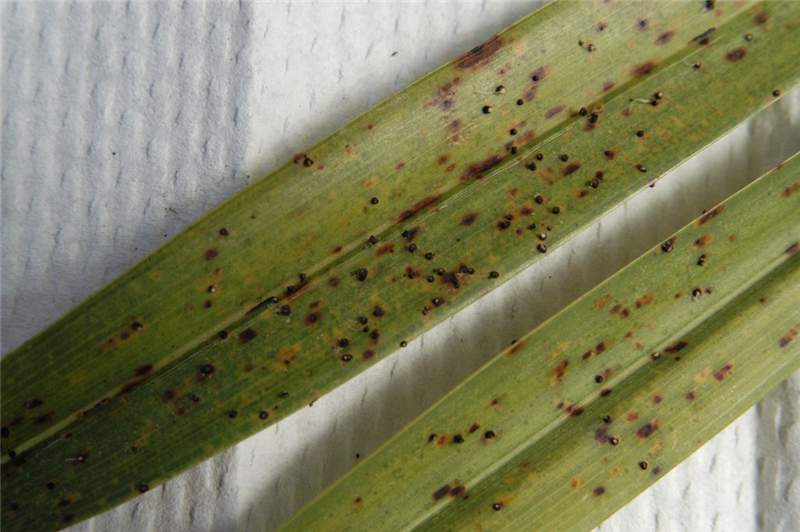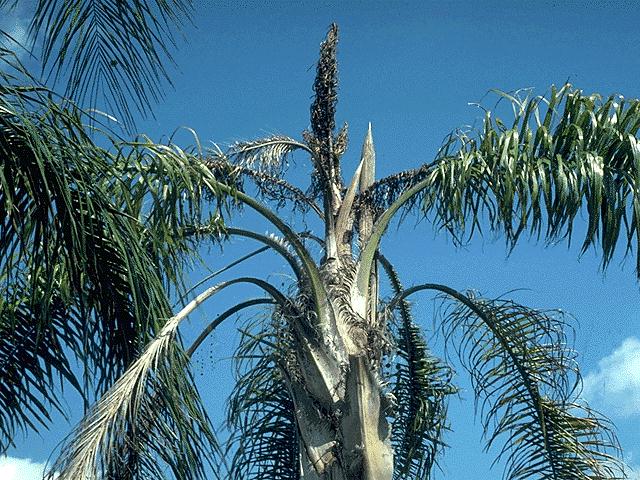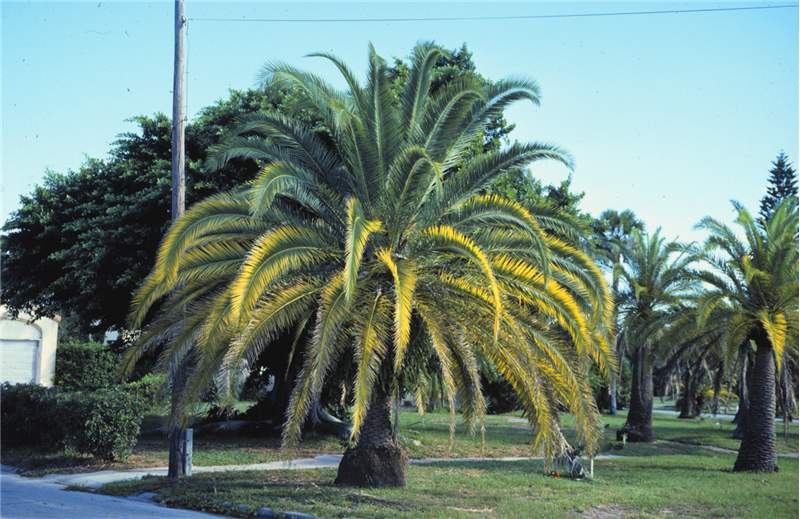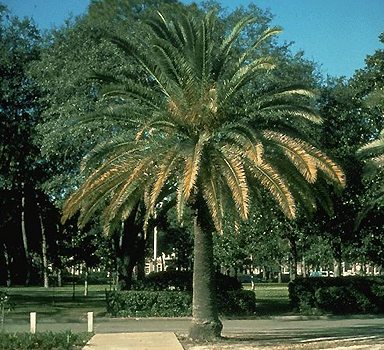Many palms in Florida suffer from nutritional deficiencies. A tell-tale sign of potassium deficiency is yellowing of the older leaves while the new leaves emerge green. Because potassium is mobile within the palm, the plant pulls potassium from the older leaves to use in the new leaves.
A Phoenix canariensis showing characteristic signs of early stages of potassium deficiency.

Manganese Deficiencies
Here are manganese deficiency examples in the three species that seem most effected by this problem. All of these palms are showing significant symptoms and will probably die within a year without treatment. Strangely, too much manganese can produce similar results, but in this part of Florida, its unlikely. These photos came from New Port Richey and while every yard had a palm tree of varying species, nearly every palm in every yard was showing nearly fatal symptoms of nutrient deficiencies. This is rather typical of alkaline soils in coastal cities of Florida where the land is too high for periodic coastal flooding to deposit manganese found in sea water.
A Syagrus romanzoffiana showing severe manganese deficiency.

A Phoenix canariensis showing manganese deficiency. Notice the newer leaves are emerging smaller and smaller.


